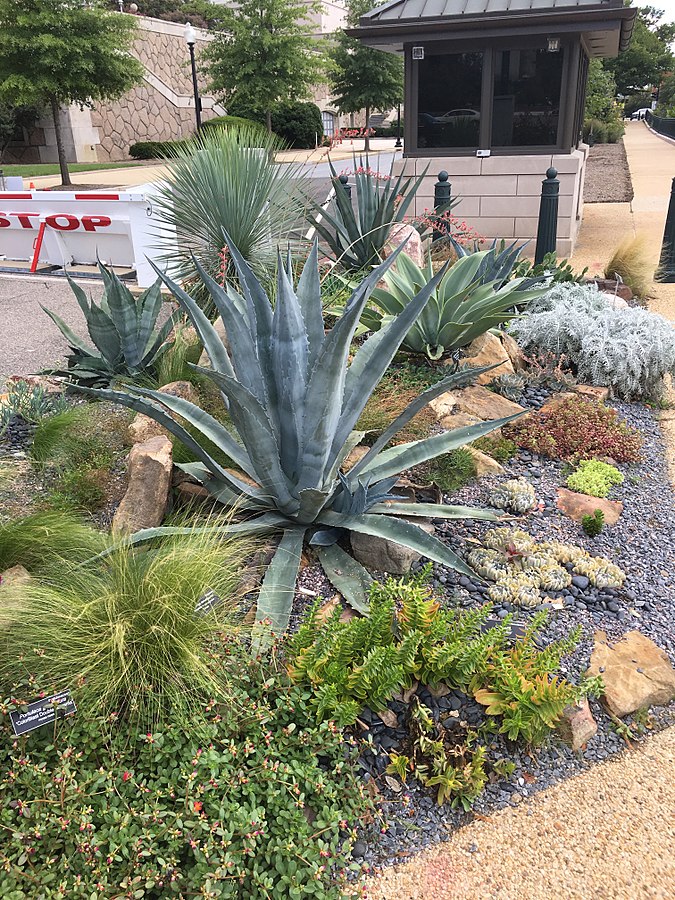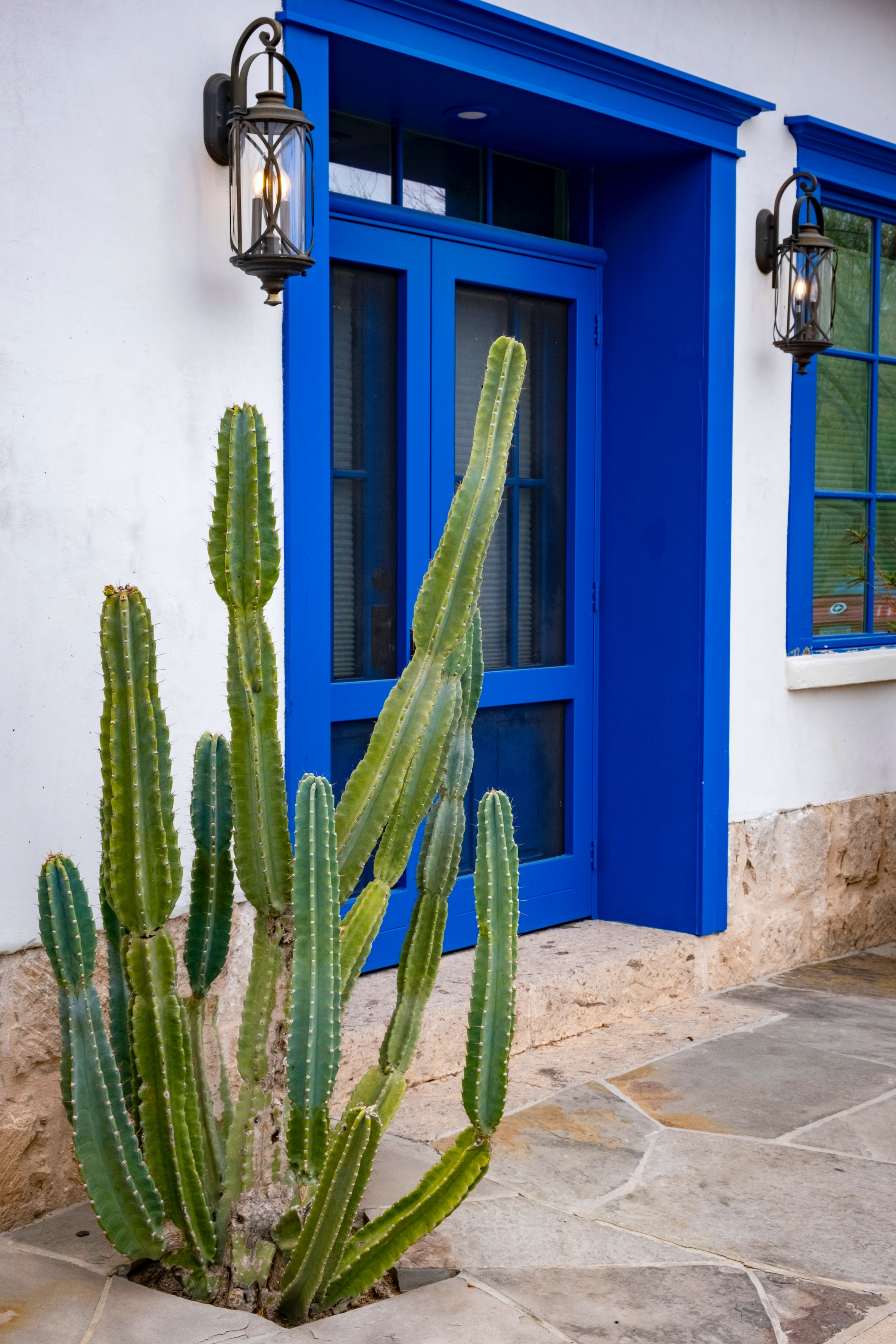Why Xeriscaping?
Xeriscaping is an intelligent and thoughtful alternative to traditional landscaping. By making smart decisions about the plants used, water needs can be decreased substantially. The resources that are taken up by your lawn and garden can be better used for other, more important things. Additionally, xeriscaping minimizes maintenance; you won't need to worry about mowing every two weeks or spraying herbicides anymore.
A truly eco-friendly option, xeriscaping helps conserve water and biodiversity, is resistant to pests and weeds, reduces the use of fertilizers and pesticides, naturally suppresses air pollution, encourages healthy soil life, looks aesthetically pleasing, and promotes financial savings over time.

Is xeriscaping pet safe or compatible?
Yes, Xeriscaping is pet safe and compatible. It is a type of landscaping that uses little to no water. This is beneficial for areas that have a lot of heat and not much rain. It also helps save money on your water bill.Grass and other plants that require a lot of water to live are not used in Xeriscaping. Instead, cacti, succulents, and other drought-resistant plants are used. This means that there are fewer places for your pet to urinate and fewer places for them to dig. You can always double check your individual plants, ground cover and make sure to use pet safe options like creeping thyme.
Principals of xeriscaping
Xeriscaping has grown over the years but at its core it aims to use no water, reduce maintenance and improve the environment (soil or pollinators for example). By focusing on native plants and efficient irrigation methods, xeriscape gardeners can reduce the amount of daily maintenance required for typical yards, as well as ensure that natural rivers and creeks are not depleted.
The seven primary principles of xeriscaping are grouping plants according to their water needs; introducing drought-tolerant vegetation; adjusting soil conditions; using mulch to help retain moisture; installing efficient irrigation systems; maintaining living elements such as rocks and stones in the landscape; and providing adequate drainage.
Through these principles, avid gardeners can keep their gardens beautiful while reducing energy consumption and water wastage.
Does it matter where I live if I want to xeriscape?
If you want to create a xeriscape in your garden, the location of where you live is very important. Depending on the climate and topography of the area, you'll need to select drought tolerant plants that optimize water usage and require minimal upkeep.
Additionally, the type of soil can have a big impact on what kind of plants will thrive in your garden, so it's good to know that as well. Ultimately, knowing where you live and using this information strategically will help you create an ideal low-water landscape for your home that's both beautiful and environmentally friendly.
Is xeriscaping cheaper than a lawn or traditional yard?
Not only is it often more aesthetically pleasing than a typical grass lawn, but it is also much cheaper and requires less maintenance than maintaining a turf lawn. Xeriscaping can vary depending on the available resources while taking into account applicable local codes, climate, soil type and location of trees and other buildings. For example, you can get creative by incorporating mulch beds, evergreen shrubs, succulents and pebbles to create an eye-catching low-water environment. Choosing xeriscaping as an option is not only better for the environment with its lower water use; it's also cost effective in terms of labor, tools, materials and water bills for a controlled budget.
Are there downsides to xeriscaping?
While xeriscaping has numerous documented benefits that range from reduced water usage and improved landscaping aesthetics, there are a few drawbacks to this landscaping trend as well. For example, some homeowners may find that the cost of the materials can outweigh any potential savings on water bills; additionally, changes in soil conditions may lead to more frequent maintenance requirements such as adjusting irrigation scheduling, reapplying mulch or replacing missing plants.
The challenge of finding drought-tolerant plants that still suit the homeowner's taste can be difficult despite endless online resources and local greenhouses, making xeriscaping seem undesirable when compared to option of no work at all. While downsides to xeriscaping exist, thoughtful planning and rigorous maintenance should make these frustrations worth the effort for those interested in reducing their water bill and beautifying their landscape without undoing nature’s balance.
How can I do xeriscaping affordably?
Planning a xeriscape on a budget doesn't have to be impossible! Start by using native plants from your local area which can often be found for free or at a discount. Native plants are resilient and well-suited for their environment, so you won't need to dedicate much time to maintenance - although it's still important to water them in the beginning stages.
Additionally, you can use multiple materials instead of just buying expensive stones or expensive plants. Consider pebbles or crushed shells as cheaper mulch alternatives and build your xeriscape smartly; use hardy succulents or groundcover such as thyme and phlox to minimize yard upkeep. Ultimately, while it will take some planning, you can make an affordable, beautiful xeriscape that requires minimal time and effort to keep in shape.
What is the difference between a xeriscape and a zeroscape?
Although both terms contain the same root word, “xeriscape” and “zeroscape” couldn’t be more different. A xeriscape is an approach to landscaping which utilizes drought tolerant plants and water saving techniques; it was popularized in places like Colorado as a water-conserving method of landscaping.
On the other hand, a zeroscape is virtually the opposite: no plants, grass, or ornamental features, just dirt and rocks where a conventional landscape may have been. This approach has become popular in states like Nevada and Arizona where the dry heat necessitates minimal watering. Whether a builder chooses xeriscaping or zeroscaping depends largely on the climate of the respective area, but both approaches can save time, money and most importantly – water!
So should you xeriscape?
Yes - xeriscapes are becoming increasingly popular for many good reasons. It requires very little water, which translates to lower utility bills. It also requires little maintenance, which saves time and energy throughout the year.
